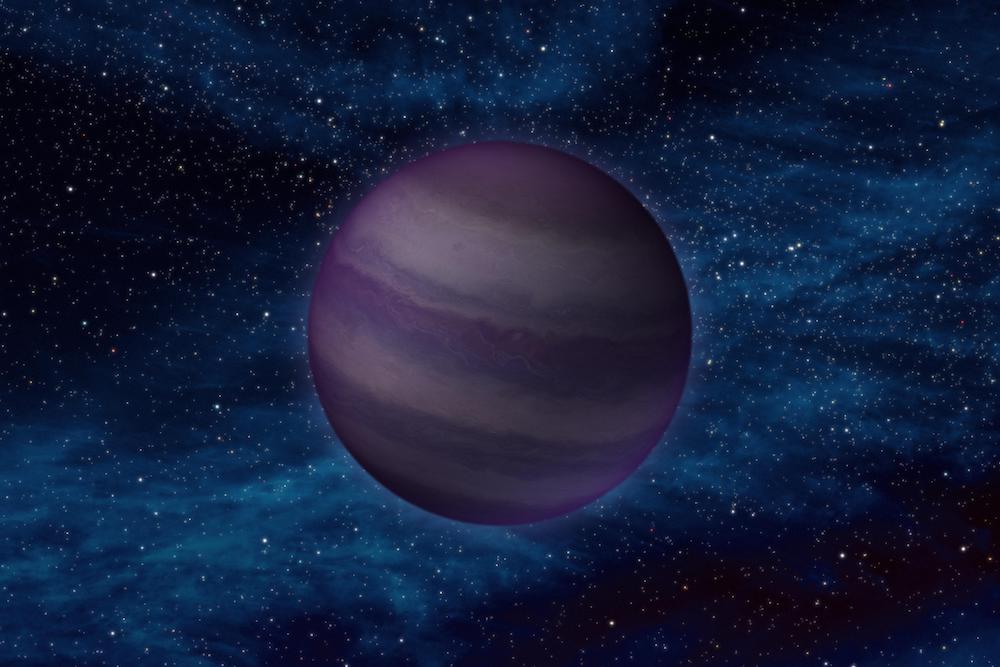Create a free profile to get unlimited access to exclusive videos, sweepstakes, and more!
Planet Nine might have been glimpsed by a satellite in 1983... or not
Back in the Neon Decade, something that could have been Planet Nine was seen — and overlooked.

Back when many space discoveries that have recently been made could have only existed in science fiction, something that could have been Planet Nine was seen — and overlooked.
Telescopes and satellites that were around in 1983 didn’t exactly have the observing power of those around now. Maybe they look primitive to us now, but we still might be underestimating them. NASA’s Infrared Astronomical Satellite (IRAS) eyed something weird that still cannot be explained. Could it have really detected a monstrous planet with such a wide orbit that it takes 20,000 years to make one revolution around the Sun?
IRAS data from June, July, and September of that year was recently reexamined by astronomer Michael Rowan-Robinson of Imperial College London. There are three suspicious point sources that may not be evidence of the hypothetical planet. He is doubtful that such a fossil of a satellite could ave actually detected Planet Nine, but open to the possibility, and his findings were recently published in Monthly Notices of the Royal Astronomical Society.
“Given the poor quality of the IRAS detections, at the very limit of the survey, and in a very difficult part of the sky for far infrared detections, the probability of the candidate being real is not overwhelming,” he said.
Rowan-Robinson had actually prepared the IRAS Point Source Catalog in 1983, so none of this is exactly new to him. He couldn’t find anything when he searched for Planet Nine (then called Planet X because Pluto had not been demoted yet) then. IRAS had observed 98% of the sky in far-infrared with no trace of any ginormous undiscovered objects. Decades later, he decided that it was worth scouring the data one more time now that so many advancements in astronomy and astrophysics have made it possible to detect more objects lurking out there than ever.
Planet Nine was first speculated about when something was needed to explain mysterious objects in Neptune’s orbit. They were thought to be debris from the formation of the solar system, but not from Neptune itself, and too large to have come from Pluto. That was how the Planet Nine hypothesis was born. IRAS was able to identify certain moving objects despite its limitations, including fast, medium, and slow movers. Slow movers could be observed in more detail. This is why they were the most likely type of object an extra planet in the solar system could be.
From the IRAS data, Rowan-Robinson was able to figure out a possible mass and distance range for Planet Nine. He was able to get an idea of the distance to planets that would have been detectable for IRAS, depending on their masses. Planets with more mass are easier to pick up on, meaning they can be detected at further distances than those with less mass. Why was Planet Nine not obvious if it’s supposed to be such an enormous beast? If it has such an epic orbit as it is assumed to have, maybe even wider, it might be that it ventures way too far out.
So maybe Planet Nine is undetectable because even its size gets swallowed up by its distance from Earth. That is only one of a myriad of possibilities. This thing might not exist, or maybe it does, and left debris behind, but was kicked out of the solar system billions of years before humans (let alone telescopes) emerged. An exhaustive analysis of unidentified sources in the IRAS data told Rowan-Robinson that at least these observations were unlikely to be it. It sounds like a dead end, but if we can rule out what isn’t Planet Nine, then we may get closer to what it could be.
“IRAS had a significant capability to detect a planet in the outer solar system [if it fell in a certain mass range],” he said, but added that “Planet Nine would have been detectable as an unidentified [object]” after reviewing all three sources.
Is Planet Nine really out there? If that debris can be proven to have come from nothing else in the solar system, probably. Is it still in the solar system? If it is, it’s hiding.


























